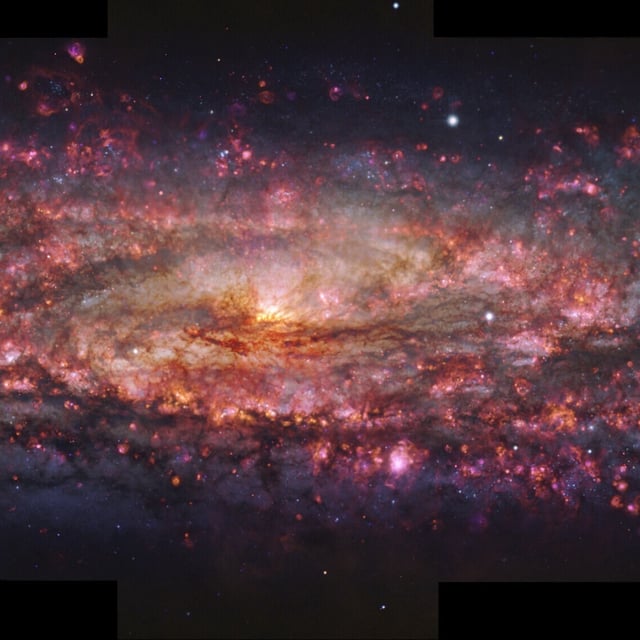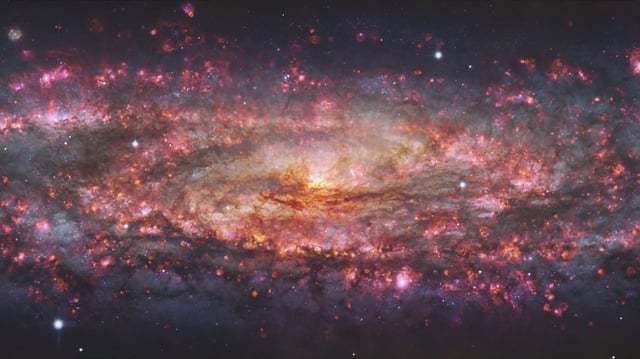Overview
- Astronomers used the MUSE instrument on ESO’s Very Large Telescope to observe NGC 253 for more than 50 hours and combined over 100 exposures into a 300 GB mosaic containing some 9 million spectra.
- The composite image spans about 65,000 light-years of the galaxy and resolves roughly 4,000 distinct optical wavelengths to highlight variations in stars, gas, and dust.
- Initial analysis identified around 500 planetary nebulae, allowing a revised distance estimate that is nearly 17% greater than earlier measurements.
- Because Sculptor lies 11 million light-years away yet appears large enough for whole-galaxy views, it offers a unique bridge between detailed Milky Way studies and broader surveys of distant galaxies.
- Researchers will leverage the detailed color map to trace how gas composition and flows drive star formation across different regions of the galaxy.

